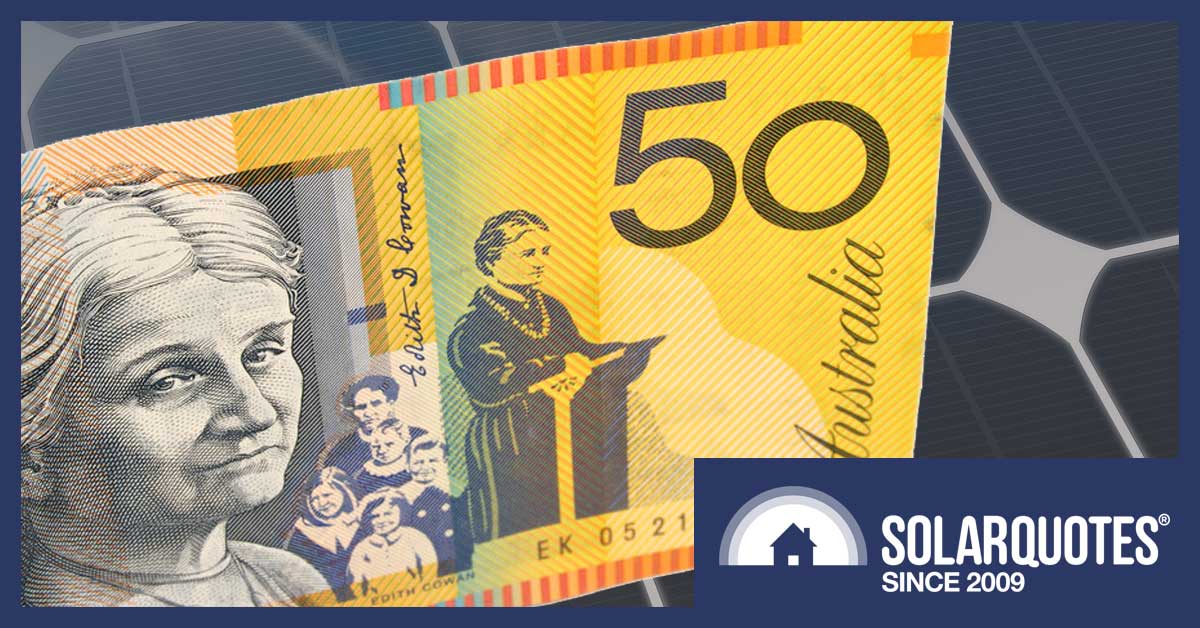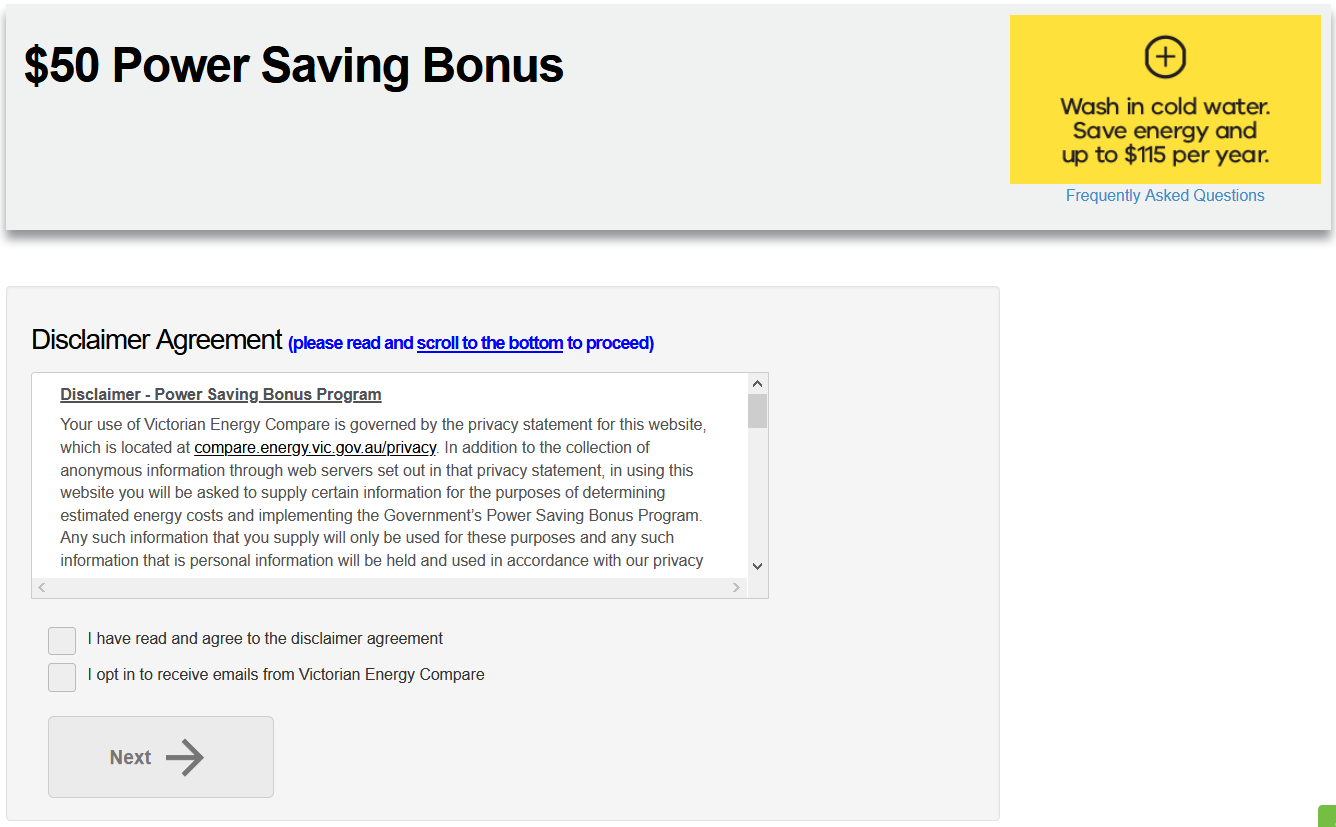
Victorians can get $50 from the Victorian Energy Compare website until the 30th of June 2020 because they’d rather waste money on bribes than allow real competition.
If you live in Victoria and have an electricity or gas account in your name, you can get $50 from the Victorian Government. Why are they handing out $50 to every household that asks for it?
Because comparing electricity plans is difficult and rather than take the obvious step of making them easier to compare, they have decided to take the ridiculous step of bribing households with a total of up to $130 million to notice that the Victorian Energy Compare site happens to exist.
In my opinion this is incredibly stupid. On the other hand, fifty bucks is fifty bucks.
Things Used To Be Different
When I was a lad, back in the Pleistocene, choosing an electricity retailer was easy. There was only one retailer.1 If you wanted electricity you called them on a phone with a spring-loaded rotary dial and, as long as it was local call, it would cost you around 87 cents in today’s money. There was no choosing between a vast array of retailer electricity plans. The only choice was between having electricity and not having electricity.
Nowadays things aren’t so easy for the majority of the population. In the following locations millions toil and suffer under the tyranny of having to choose electricity plans:
- The ACT: 427,000
- NSW: 8,100,000
- South Australia: 1,750,000
- South East Queensland: 5,100,000
- Victoria: 6,600,000
That’s 22 million out of 25.6 million on the continent — or paddling next to it in the summer — who bear the indignity of having electricity retailer choice forced upon them. Around 86% of us are made to choose between plans that are deliberately difficult to compare due to:
- Varying daily supply charges, and…
- Discounts, membership fees, and other charges.
Despite some piss weak attempts to make things easier for consumers, there has been little improvement and regulators seem okay with the introduction of “membership fees” and other charges; so I don’t know if regulator hands will ever be free from the stain of stupidity.
It Should Be A Lot Simpler
If the Victorian Government wanted to make things easy for people it just has to make two simple changes:2
- Make the daily supply charge for every plan the same. I think zero cents per day would be best, but if that’s not possible the lower the better.
- End all discounts, membership fees, and other charges so the only price difference between plans is what is charged per kilowatt-hour.
Households on a standard tariff who pay a flat rate for electricity would only have to look at single number to see which is the cheapest plan, or two numbers if they have a controlled load for hot water or other use.3
Homes with time-of-use tariffs would have three numbers to compare — peak, shoulder, and off-peak rates. This way it will be easy for people to see which retail electricity plan is the cheapest and either choose that one – or go with another retailer if they happen to really like the logo a more expensive retailer puts on their bills or are particularly in love with the call centre that answers the phone.
This would introduce real competition into the electricity retail market, which hasn’t existed in the roughly 20 years retailer choice has been around because electricity plans are too confusing to be easily compared. One of the reasons we were given for introducing retailer choice was it would increase competition. I think that, given we’ve had 2 decades of inadequate retail electricity competition, we should give it a go and see what it’s like.
One more change that should be made to keep electricity bills simple is:
- Apart from receiving a solar feed-in tariff, solar households should be treated exactly the same as non-solar households.
There’s no good justification to make electricity plans more complex just because a home has solar panels any more than there is because a home installs an air conditioner,4 puts in insulation, or replaces an electric stove with a gas one.
The $50 Is A Bribe To Increase Competition
The reason why the Victorian Government is handing out $50 to every household in the state with an electricity or gas bill that asks for it, is to bribe people to notice the Victorian Energy Compare site in the hope they will use it to compare electricity and gas plans and get a better deal.
In other words, they have probably spent millions making this site and are now handing out up to $130 million in $50 “look at me” payments so people will actually use it. This is nuts compared to simply requiring electricity plans be easy to compare and allowing competition to work the way it’s supposed to.
The $50 Payments Are A Transfer Not A Cost
If every household in Victoria bothers to claim the $50 then the total paid out will come to around $127 million. But, in case you’re having a heart attack over the amount of money wasted, I’ll point out it is a transfer and not a cost so it’s not as bad as it seems.
It’s a transfer because rather than being spent, the money is being moved around. It’s being taken from some Victorians and given to others. A portion of that $127 million will be wasted in the process of moving it around but most of it will end up in someone’s pocket. This means they are only wasting millions of dollars, not over one hundred million. It’s not the same as if they were spending it on it on power ups for Farmville or giving Disney a massive subsidy to make computer generated images of people in tights punching each other here.
How To Get The $50
To get $50 for noticing the Victorian Energy Compare site exists, you have to go to the Victorian Energy Compare site and upload your electricity bill. Here’s a picture of the page you’ll need to go to:
Here’s a link that will take you directly to that page, but you’re not allowed to use it. That would be cheating. You have to start at this page and earn the $50 by using the energy compare site as though you seriously want to compare plans5 until this comes up:
This will take you to the disclaimer page shown above where you will have to scroll down to the bottom, otherwise it won’t let you proceed. If you don’t pretend you’ve read the conditions by scrolling down you won’t get the money.
Lie about having read the conditions and click “Next”…
…and you’ll be given an option to upload an electronic PDF version of your electricity bill. If you don’t have a PDF of your electricity bill and only have a paper bill, you can click on “I don’t have a PDF bill” and you’ll be asked to enter a whole heap of details:
Fortunately, all the non-obvious information should be on your electricity bill.
If you only have a gas bill you can still get $50 but you’ll have to email:
And ask them what you need to do to claim it. If you have a gas and an electricity account you can’t get two fitty dollah payments as there is a limit of one per household.
The $50 payment can’t be claimed by businesses as it’s only available for residences and will be available until the 30th of June 2020.
Enjoy
That’s all. If this information prompts you to get the $50 payment, I hope you enjoy it. Or at least I hope you enjoy what’s left after you send me the 10% finder’s fee. If you’d rather not send me a finder’s fee, you can instead send me what I actually deserve. You can do this by holding your hand in front of your screen, clenching your fingers into a fist, and then extending your index finger.
Footnotes
- And if the Soviet Union had taken over our country we would only have one road. From our home to the factory. One way! ↩
- Making these changes is more difficult than you might think. Unfortunately, I don’t know enough to go into the details of why such obvious and beneficial changes are so hard to do. ↩
- To keep things simple it would be possible to make controlled loads a set percentage less than the per kilowatt-hour price or a fixed amount for every retailer. ↩
- It is possible to make the argument that air conditioner owners should shoulder a greater burden of electricity costs than those without, as a vast number of air conditioners all turned on at the same time in summer strains the electricity grid and greatly increases the cost of preventing blackouts. Using a gas stove instead of an electric one also helps reduce stress on the grid. By supplying electricity on summer afternoons, rooftop solar reduces stress on the grids and helps reduce grid costs. ↩
- If you are in a hurry do not tell it you have a clothes dryer or a washing machine. ↩





 RSS - Posts
RSS - Posts



This is old news, been handing it out since 1st July 2018
Definitely old news, but still of interest to a considerable number of Victorians.
Ronald you are so right. It should be simple. Trouble is Scotty from Marketing and his mate Angus the not so bright don’t want simplicity. If it was simple they couldn’t get away with telling us how are bills are getting cheaper because of their non policies
I vote Ronald for Prime Minister! Who is with me!!!
Me!
??????? What’s “vote” ???????
(Someone needs a dictionary.)
Nah! I could learn how to ‘vote’ and pay taxes without a dictionary. A half-brain amputation would do it. Problem is it would also make me ‘normal’…. a price I’m not prepared to pay.
It is old news, have already claimed it. Whilst on the one hand its economic stupidity. On the other hand its $50.
That being said its not very different to handing out $2,225 rebate and loan for solar PV.
I claimed this as well, I was about $500 out of pocket for a 6.5kw system, the 46.5 per month is easily made up in the electricity savings.
Truth is if I had to spend full price it would have been worth it.
I think if the government can make these sort of handouts, for things which people would do anyway, I think it means we are paying to much tax.
??????? What’s “tax??????
they have decided to take THE ridiculous step
Grammar fix…
Thanks, grammar error fixed.
Ron, competition has definitely been increased by this stupidity. The ‘competition’ is for consumers of varying capacities to show their level of comprehension to a gov’t controlled site with said info. being collected and potentially collated for use later in each of their ‘social acceptability profile’.
The higher you score, the more dangerous you are to the established order!!!
I think I’m in love!!
FWIW i’ve used this comparison tool a few times and compared with actual usage data and costs over 12mths. Firstly, at least it makes an attempt to compare all available retailers (rather than giving you a fraction of avail retailers!). Secondly I found the estimates of annual cost and recommendations of “cheapeast plan” were only in the ballpark if I gave it real data on usage (vs. answer a few questions). That is, upload a file of your elec usage or choose the option that gives permission to upload usage using your NMI. I also like the simplicity of Solarquotes tool! (again of course best to have recent 12mths data of elec usage available).
I found the comparison tool quite flawed and can only see it getting worse and falling behind. I don’t think it caters for retailers with a membership fee (eg, Energy locals) and it definitely wont cater for Amber Electric. It doesn’t cater for the time of use solar feed in tariffs (eg, Energy Australia). Also, I noticed some retailers have different peak/off peak times, which can make a big difference. Energy locals have a plan in our area with off peak times between 8pm – 8am (great for winter heating).
Our households usage is quite different to the average household. We are 100% electric with 6.6kw solar, reverse cycle heating/cooling, electric boosted solar hot water, induction cook top, etc. So the way they “guesstimate” our usage is way off, especially over different seasons.
Our usage changes a lot between summer and winter. We export a lot more than we import during summer and we import a lot more than we export in winter.
We are better off switching between retailers for summer and winter. I ended up splitting our import and export between summer and winter and then compared each season separately. I wish they would make this easier to do on the comparison website (eg, create a summer and winter profile). Maybe you could try to factor this into your solarquotes comparison tool?
Summer = high feed in tariff, high import rate, high daily fee (big solar feed in credits)
Winter = average/low feed in tariff, lowest import rate, lowest daily fee – smaller bills
It might be a pain to switch retailer twice a year but I calculated about $200 saving compared to choosing one “average” retailer over 12 months. Plus it’s a good reminder to check the market for better offers.